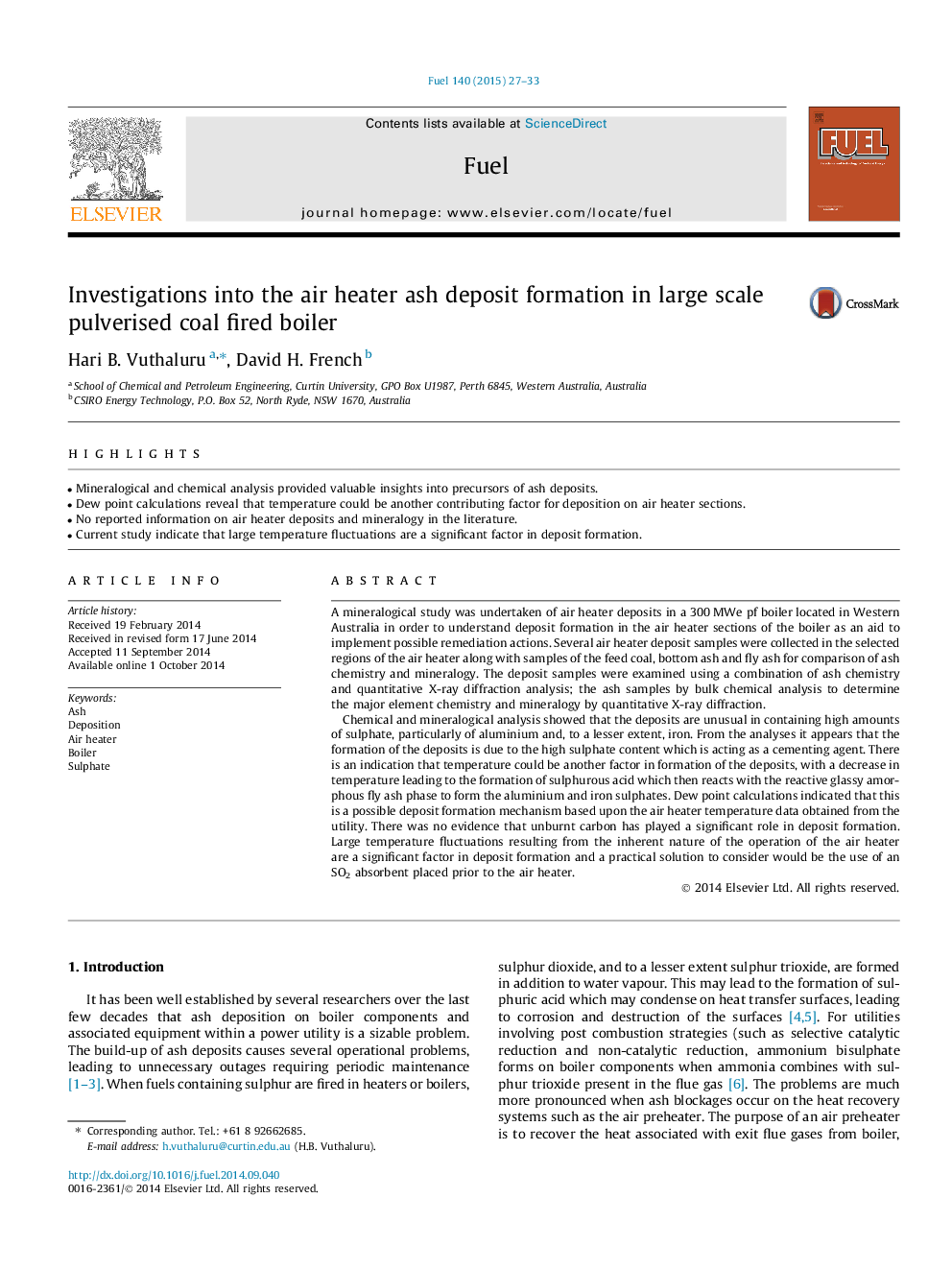| Article ID | Journal | Published Year | Pages | File Type |
|---|---|---|---|---|
| 6636090 | Fuel | 2015 | 7 Pages |
Abstract
Chemical and mineralogical analysis showed that the deposits are unusual in containing high amounts of sulphate, particularly of aluminium and, to a lesser extent, iron. From the analyses it appears that the formation of the deposits is due to the high sulphate content which is acting as a cementing agent. There is an indication that temperature could be another factor in formation of the deposits, with a decrease in temperature leading to the formation of sulphurous acid which then reacts with the reactive glassy amorphous fly ash phase to form the aluminium and iron sulphates. Dew point calculations indicated that this is a possible deposit formation mechanism based upon the air heater temperature data obtained from the utility. There was no evidence that unburnt carbon has played a significant role in deposit formation. Large temperature fluctuations resulting from the inherent nature of the operation of the air heater are a significant factor in deposit formation and a practical solution to consider would be the use of an SO2 absorbent placed prior to the air heater.
Related Topics
Physical Sciences and Engineering
Chemical Engineering
Chemical Engineering (General)
Authors
Hari B. Vuthaluru, David H. French,
